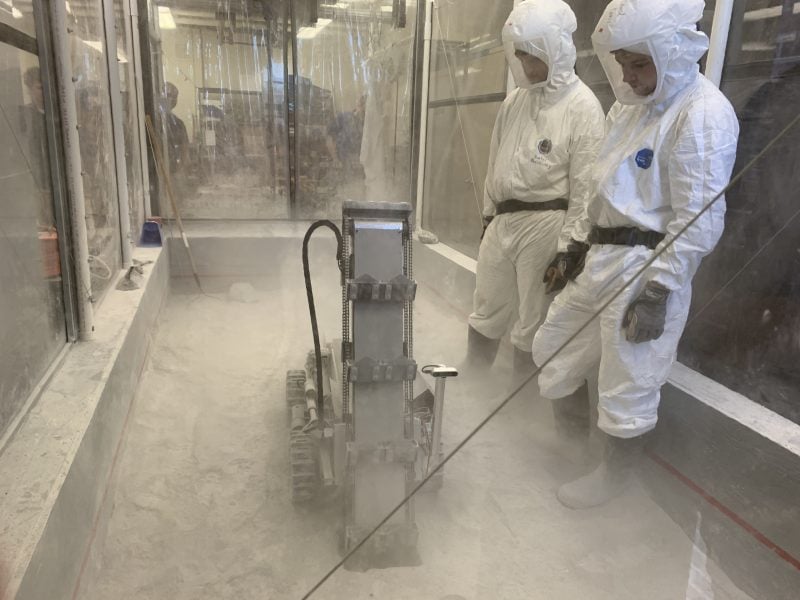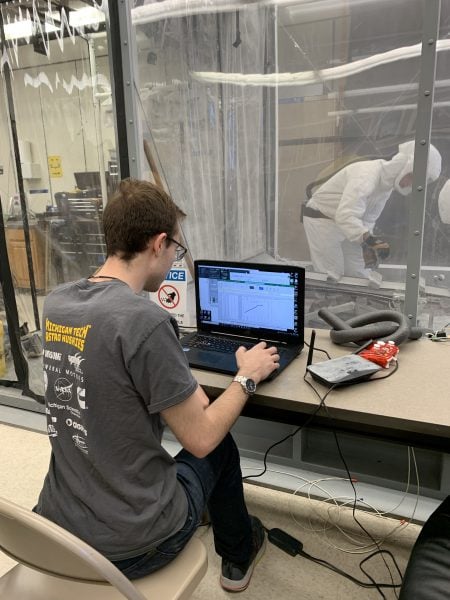The Michigan Technological University Lunabotics team is headed to the Kennedy Space Center in Orsino, Florida to compete in the NASA Lunabotics Mining Competition.

Six of the students on the 16-member Lunabotics team advised by Dr. Paul van Susante will display their combined work during a two-day mining event. They will be traveling on Friday, May 20th to compete Monday and Tuesday.
The Lunabotics competition brings university-level students from all around the country to compete in two two-day mining events. Groups 1-25 will compete on Monday and Tuesday, with groups 26-50 competing on Thursday and Friday. The 50 student groups have been working on the fabrication of their lunar vehicles with the goal of mining. Judges will score based on the following eight competition categories: Gravel Mined, Average Data Bandwidth Use, Camera Bandwidth Use, Mining Robot Mass, Energy Consumed, Dust Tolerant Design, Dust Free Operation, and Autonomy.
“I’m super excited for getting to go down to the Kennedy Space Center for the first time and actually compete. We joined the competition 2-3 years ago, but due to Covid, the competition hasn’t taken place in person,” says Timothy Hamilton. Team members Timothy Hamilton, Chuck Carey, Taylor Hammond, Brendan McRoberts, Eric Mossner, and Lunabotics Project Manager Karson Linders, along with Dr. van Susante, will represent Michigan Tech in Florida.
Through the Michigan Tech Enterprise program, they were able to develop their robot in the Planetary Surface Technology Development Lab, or PSTDL. Multiplanetary’s Regolith Pursuing Husky, or MuRPHy, is the result of that research. Regolith is the dust-like crushed rock surface that mimics surfaces such as asteroids, Mars, or our closest companion the Moon. Working in the Lunar Simulant Sandbox in the PSTDL, their lunar rover, MuRPHy, starts mining into an automated collection bin that will then dump the mined material behind the robot. Timothy says, “We have scoped out some of the competition and think that we can do well, but it all comes down to how our robot and our competitors perform on the day of competition, so it’d be great if everyone could wish us luck and safe travels!”
Learn more about the Planetary Surface Technology Development Lab at: https://huskyworks.space/, https://huskyworks.space/facilities/sandbox
Learn more about Lunabotics at: https://mine.geo.mtu.edu/Lunabotics.html, https://www.nasa.gov/content/lunabotics-information, https://www.facebook.com/Lunabotics.Competition/
